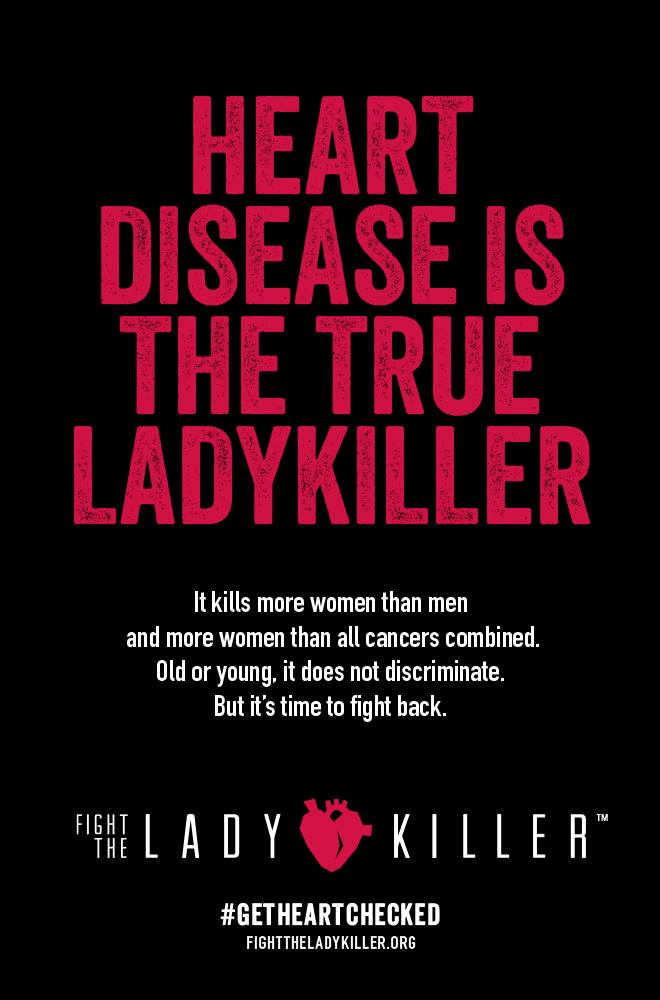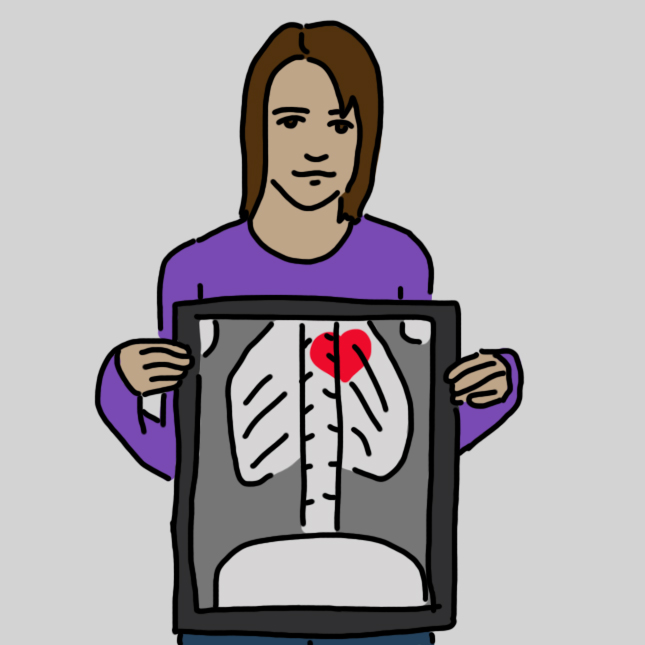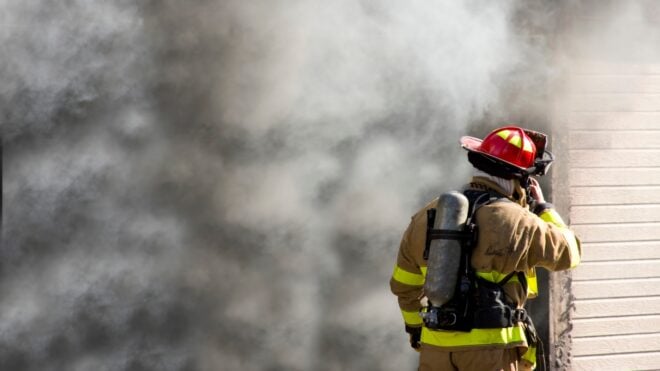February is known for being a time of candy hearts and sweet romance — but it's also the official month of Heart Health. And in honor of that, we should all take time to address heart disease, the number one killer of women.
Affecting around 43 million women in the U.S., heart disease is deadlier for females than all forms of cancers combined. While women also suffer from silent killers like breast and ovarian cancers, heart disease causes one in three women's deaths each year.
It also affects women's hearts differently than it does men's. Symptoms in women are more subtle, more varied, and can lead to a great deal of confusion.
That's why singer, songwriter, and activist Barbra Streisand recently spoke to InStyle magazine about raising awareness in women about their risks, as a staggering 90 percent of women have one or more risk factors for developing heart disease.
In an exclusive look below, we'll go through eight of the most prominent symptoms of heart disease reported by women.
Fortunately, there are several ways to lower your risk of heart disease, and to help strengthen your body, such as lowering your cholesterol levels.
Scroll down to find out what heart attack symptoms you should look out for, and let us know your thoughts in the comments below.

Heart disease is the #1 killer of women, and in a recent interview with InStyle magazine, Barbra Streisand has urged all women to help "fight the ladykiller."
After her mother underwent bypass surgery, Barbra started to fully recognize the “scope of the epidemic," and was "startled to discover that heart disease kills more women than men.”
In 2014, Barbra helped found the Women’s Heart Alliance, an organization that helps fund research and treatment for female heart diseases.

“More people lose loved ones to heart disease than they realize, because these deaths are often falsely attributed to natural causes or ailment," Barbra told InStyle.
Below, we outline the most common symptoms of heart disease in women, and discuss the steps to easy prevention.
Common Heart Diseases In Women

Coronary Heart Disease: the most common type of heart disease. It occurs when plaque (made up of fat, cholesterol, and other substances in the blood) builds up in the arteries, leading to decreased blood flow to the heart. Usually, women develop clinically evident CHD up to 10 years later than men do.
Coronary Microvascular Disease: similar to CHD, but instead of having major coronary arteries blocked, smaller arteries are obstructed in CMD. This disease generally affects more women than men.
Broken Heart Syndrome: also known as stressed-induced cardiomyopathy, this syndrome results from extreme emotional or physical stress, rather than from blocked arteries. Most patients recover quickly with treatment.
Heart Failure: this is a condition that develops slowly over time, and usually with patients who have had a prior injury to the heart muscle, uncontrolled high blood pressure, a heart attack, or a problem in the heart valves.
Arrhythmia: a combination of conditions leading to a heartbeat that is irregular, too fast, or too slow. It can be caused by high blood pressure, valve disorders, electrolyte imbalances in the blood, and heart attacks, among others reasons.
High-Risk Factors For Women

It's not just high cholesterol, high blood pressure, and obesity that lead to heart diseases.
Here are the most notable high-risk factors that affect more women than men:
- Diabetes
- Mental stress
- Smoking
- A lack of physical activity
- Lowered levels of estrogen after entering menopause
- Metabolic syndrome (caused by high blood pressure, blood sugar, and fat content in the body)
- Pregnancy complications
Below, we list the eight symptoms of heart disease — and heart attacks — that women should look out for.
Symptom #1: Pain In The Arms

Watch out for a numbing pain that travels through your arms, and possibly down the left side of your body. This may be a sign that you're suffering from an undetected heart disease – and that a heart attack is coming on.
During a heart attack, signals of pain will travel through the nervous system, causing the brain to confuse these signals with those that come from other parts of your body — namely, from your arms, jaw, shoulders, elbows, neck, or back).
Arm pain may actually be the first sign of a heart attack. At times, it occurs through the night, weeks leading up to the heart attack.
Instead of full-on pangs, patients often experience a tingling, pins-and-needles sensation, or a tired, heavy feeling in their arms.
Symptom #2: Chest Pain

Also known as angina, chest pain can affect both men and women.
While chest pain in men usually comes in the form of feeling of pressure, or a squeezing sensation, it isn't always the most prominent symptom in women who suffer from heart disease.
Women are likelier to suffer from a combination of subtler symptoms, the majority of which are listed below.
One explanation is that unlike men, women more often experience blockages in the smaller arteries, than in the larger coronary arteries, according to the American Heart Association.
Symptom #3: Indigestion

Many people mistake stomach pain and indigestion as signs of heartburn, of an ulcer, or just of a common cold.
But angina, or chest pain caused by the obstruction of coronary arteries in heart disease patients, can lead to symptoms like extreme discomfort during physical activity, and an ache in the stomach that feels like bad indigestion.
Symptom #4: Pain In The Neck And Jaw

Commonly mistaken for toothaches, pangs in the jaw can suddenly start and stop, without any warning at all.
Discomfort in both areas will spurt sporadically, sometimes between days, in patients with heart disease. In some cases, the pain may continue on til the second before a heart attack occurs.
"Sometimes the heart isn't able to give a good signal and, instead, the pain can radiate to the neck, jaw, and back," said Dr. Suzanne Steinbaum of Lenox Hill Hospital in New York City.
Symptom #5: Upper Back Pain

Pain in the upper back can signal stress to the heart muscle, said Dr. Steinbaum.
In some cases, pain symptoms can travel through the woman's body, instead of igniting all at once.
Back pain usually always follows jaw and neck pain.
Symptom #6: Shortness Of Breath

Shortness of breath in patients with heart disease and, more specifically, heart failure, happens when the heart slows down its pumping, creating elevated pressures in the vessels near the lung.
If you find it difficult to breath when you lie down and wake frequently at night due to a shortness of breath, or if you easily can't catch your breath after a little physical activity, it's best to check with your doctor to see what is going on.
Symptom #7: Nausea Or Vomiting

Sometimes, flu-like symptoms will manifest in women with heart disease, especially in ones who are about to experience a heart attack.
Many patients may feel nauseous, regurgitate, and experience immense bouts of discomfort in their stomach region.
"A woman's intuition is a very strong thing; don't ever discount it," Dr. Stienbaum reminds us.
Symptom #8: Lightheadedness, Dizziness, And Unusual Fatigue

In addition to more well-known symptoms of heart disease like angina, heart palpitations, and shortness of breath, many women also feel intense weakness, dizziness, and fatigue, according to WebMD.
In fact, over 70 percent of women who have had heart attacks reportedly experienced immense, abnormal fatigue the month before.
Steps To Heart Disease Prevention

When armed with the right knowledge, heart disease can be prevented.
Here are some lifestyle changes and factors to consider:
- Stop smoking
- Conduct blood sugar tests with your doctor
- Stay physically active
- Manage your blood pressure
- Lower your cholesterol
- Be conscious of your diet
- Know your family’s history with heart diseases
- Maintain a healthy weight
- Have regular wellness exams
What To Ask The Doctor

In addition to becoming aware of the signs and symptoms of cardiovascular diseases, it's important to regularly communicate with your doctor about what may be causing you discomfort, and to ask important questions, including:
- How severe is my heart problem?
- What are the appropriate treatments?
- How can I make my heart stronger?
- What should I do when I feel a heart attack coming on?
- How often should I get my heart checked?
- What specific steps can I take to leading a healthier lifestyle?
- What activities can I not do?

To view an extremely helpful mobile checklist of heart health information and suggestions, click here.
If you would like to read the eye-opening stories of women who have lived through heart disease, visit the website for Barbra's campaign "Fight the Ladykiller" — or "Like" her Facebook page for recent updates.
To help "fight the ladykiller," please SHARE these important tips and symptoms with all the women in your life!




